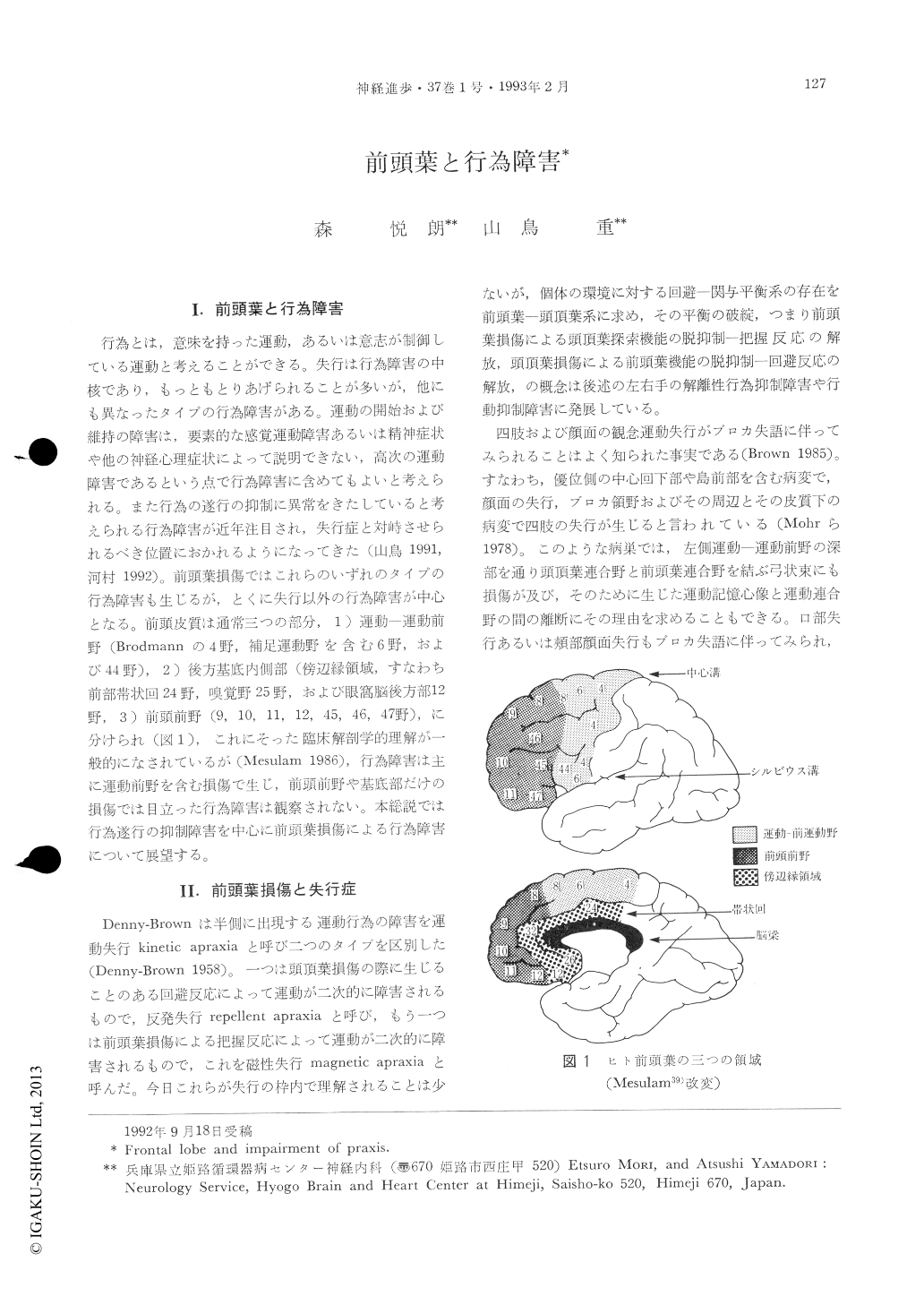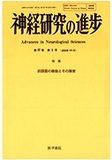Japanese
English
- 有料閲覧
- Abstract 文献概要
- 1ページ目 Look Inside
I.前頭葉と行為障害
行為とは,意味を持った運動,あるいは意志が制御している運動と考えることができる。失行は行為障害の中核であり,もっともとりあげられることが多いが,他にも異なったタイプの行為障害がある。運動の開始および維持の障害は,要素的な感覚運動障害あるいは精神症状や他の神経心理症状によって説明できない,高次の運動障害であるという点で行為障害に含めてもよいと考えられる。また行為の遂行の抑制に異常をきたしていると考えられる行為障害が近年注目され,失行症と対峙させられるべき位置におかれるようになってきた(山鳥1991,河村1992)。前頭葉損傷ではこれらのいずれのタイプの行為障害も生じるが,とくに失行以外の行為障害が中心となる。前頭皮質は通常三つの部分,1)運動―運動前野(Brodmannの4野,補足運動野を含む6野,および44野),2)後方基底内側部(傍辺縁領域,すなわち前部帯状回24野,嗅覚野25野,および眼窩脳後方部12野,3)前頭前野(9,10,11,12,45,46,47野),に分けられ(図1),これにそった臨床解剖学的理解が一般的になされているが(Mesulam 1986),行為障害は主に運動前野を含む損傷で生じ,前頭前野や基底部だけの損傷では目立った行為障害は観察されない。本総説では行為遂行の抑制障害を中心に前頭葉損傷による行為障害について展望する。
Praxis can be defined as meaningful, volition-controlled actions. While apraxia is a core manifestation of impaired praxis, damage to the frontal lobes also causes impairment of praxis apart from apraxia. Difficulties initiating and maintaining actions, and disinhibition of actions are the most important features of frontal-related praxis disorders.
Lesions in the frontal lobes may produce some types of apraxia. Denny-Brown proposed the concept of kinetic apraxia. One component of the kinetic apraxia is magnetic apraxia, in which contralateral limb mobility is affected by abnormal release of grasp reaction after unilateral damage of the frontal lobe. Although kinetic apraxia is not categorized into a class of apraxia in the modern concept, the idea of the two opponent functions of the frontal and parietal lobes toward the environment became more attractive. Other types of apraxia caused by the frontal lobe damage are ideomotor apraxia and buccofacial apraxia. These are associated with lesions involving Broca's area, precentral gyrus, and their underlying subcortical white matter in the dominant side and with Broca's aphasia.

Copyright © 1993, Igaku-Shoin Ltd. All rights reserved.


